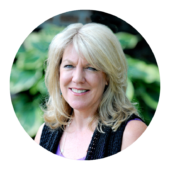This is part two of a three part series in which we address how coders can better interact with Clinical Documentation Integrity (CDI) professionals. In this part, we discuss mismatches and how to best go about resolving them. In part three we will provide a case example of best practice interaction.
What is “mismatch”?
The term “mismatch” is most often used to describe a situation whereby the CDI professional has obtained a different DRG than the coder has at final coding. This can be due to many reasons. The most frequent reason is that the CDI professional and coder have different principal diagnoses selected. In other situations, a CC or MCC may not have been coded by either the CDI professional or by the coder. In still other situations, a procedure code coded by the coder may have changed the DRG that the CDI professional arrived at. The CDI professional may not have coded the procedure impacting the DRG. There are also other reasons for mismatches.
So what happens? Usually the CDI professional will perform a final review of their case after it is final coded by the coder. In some cases coders must look at each case to see the CDI’s principal diagnosis and DRG. If a mismatch is found, the CDI professional may email the coder regarding the mismatch. This happens when the CDI professional either does not agree, or does not understand how the coder arrived at their codes and DRG. This is when issues can occur for some. Understandably, the CDI professional thinks their DRG is correct and the coder thinks their DRG is correct. It is up to the coder to communicate effectively with the CDI professional as to why they arrived at a different code and DRG. Sometimes this is easy, such as when the CDI professional has not included a surgical procedure code that alters the DRG. In this case, the coder includes the procedure code in response to the CDI email, and the procedure description for which it was coded. That usually will end the mismatch discussion as there is a logical explanation. There are also times when the coder agrees with the CDI professional after reading the email and explanation. That would be an easy email to respond back with.
When the case involves a different principal diagnosis, then things can get a bit hairy. The coder must then make sure to effectively communicate why they arrived at the PDX code they did if they think their coding is accurate after seeing the mismatch email. And, they must communicate effectively without insinuating blame or putting others on the defensive. This is a delicate communication that must be supported by facts and documentation.
Effective Communication
The coder should first think, “How would I want to receive information if I was on the other end of the email I am about to send? What would I want to see to convince me of why the coder assigned the codes that they did?” Just thinking this through will help communication. Also, pausing before sending to reread your email may catch some verbiage you may wish to change. Sometimes there is a competitive atmosphere between the two departments, however this should not be reflected in communications. They should be positive, factual, and complete. Here are some suggested steps to take:
-
- Understand where the CDI professional is coming from. If you see where the CDI professional may have missed a coding guideline, include it with the explanation of your principal or other diagnosis.
- Be prompt with your response as the claim may be held or reimbursement affected.
- Always be pleasant, even if the email sent to you is not. Do not take the email tone personally. The CDI professional is just wanting to know why your DRG is different.
- Start with “I coded the principal diagnosis (or other diagnosis or procedure) based on this _____. (name official coding guideline, AHA Coding Clinic, Index and then tabular listing.)
- Next include “The documentation for the basis of my code selection is ________. (Include the exact documentation (deidentified if possible) that was the basis of the code assignment. Copy the documentation exactly. Do not paraphrase.
- Do not include extraneous documentation that is not pertinent to the code assignment.
- Do not tell the CDI professional where to find the documentation and then not include it. It will save time and more emails by providing the documentation that is the basis of the code assignment Having to send and resend emails impacts productivity for both professionals.
- Do not get caught up in endless emails back and forth. Once you send your response with pertinent documentation, guidelines and reasoning, if the CDI professional still disagrees with your coding, refer the case to a coding manager who can address the situation at a higher level.
- If the response from the higher level manager or director is to code as the CDI has coded the case, put a notation in the case as to this directive. In some cases the coder will have to agree to disagree and follow the facility’s manager/director’s instructions.
- If a change involves a clinical determination, it may be wise to get a physician liaison to look at the case if it is possible for the coder and CDI to do that. Not all facilities have physician liaisons/advisors however.
In the final part of this series, we will present a case example to help you understand the above recommendations.
The information contained in this coding advice is valid at the time of posting. Viewers are encouraged to research subsequent official guidance in the areas associated with the topic as they can change rapidly.





